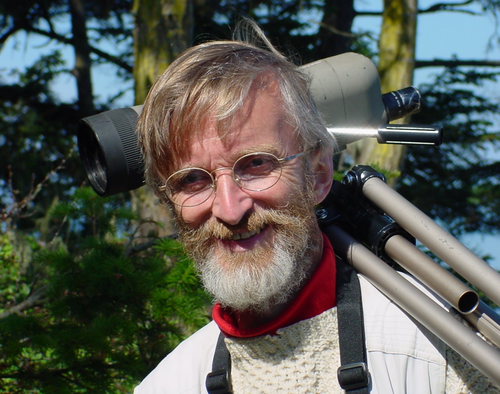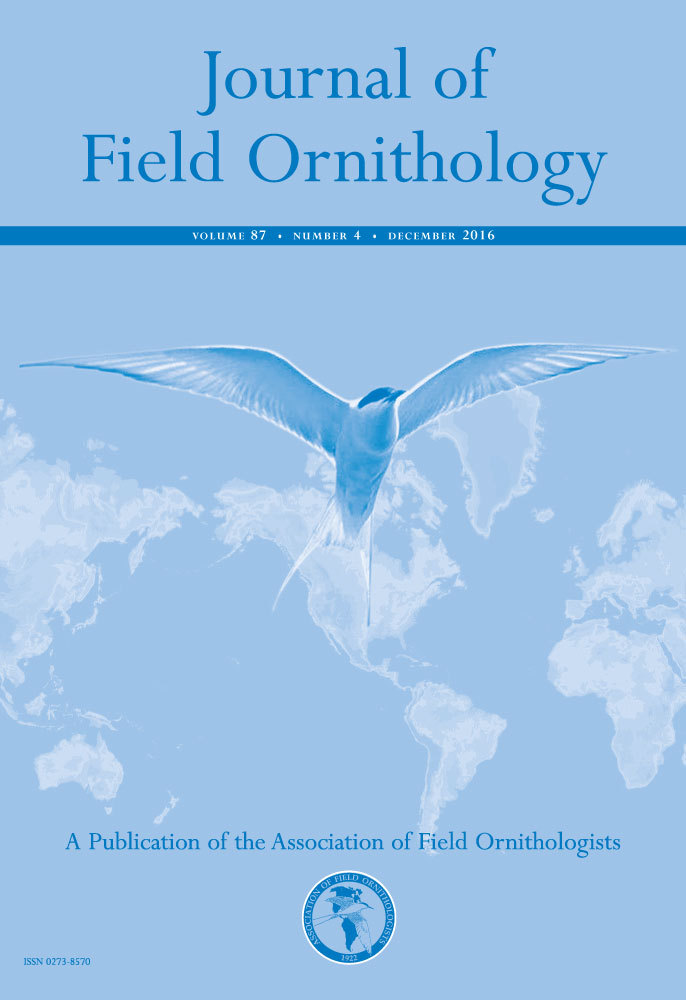A Tribute to Edward (Jed) H. Burtt, Jr.
When Jed Burtt passed away on April 27, 2016, The Association of Field Ornithologists and, in fact, all of American ornithology, lost a true friend. I had known Jed for nearly 40 years and considered him a great colleague and friend. Jed became a Life Member of the Association of Field Ornithologists (at the time, the Northeastern Bird-Banding Association [NEBBA]) in 1972. His formal contributions to the Association began in 1978 when he became the Literature Review editor for Bird-Banding which, that year, morphed into the Journal of Field Ornithology (JFO). He continued this editorship through 1985 when he became editor of the journal. At that time, I was the vice-president of NEBBA and chair of the committee charged with recruiting a new editor for the Journal of Field Ornithology. I was absolutely delighted when Jed agreed to become editor beginning in 1986 with volume 57. Incidentally, that same year, I wrote my first book review for JFO, of the book An analysis of physical, physiological, and optical aspects of avian coloration with emphasis on wood-warblers by Jed in the American Ornithologists' Union's Ornithological Monographs series (Burtt 1986). It was the second of the seven books he was to publish.
Jed's leadership as editor of the Journal of Field Ornithology produced profound effects that were to change the journal and give new direction to the Association of Field Ornithologists. In the journal, he instituted many changes, including emphasizing short papers that would facilitate rapid turnaround time, and publication of titles, abstracts, and tables of content in Spanish. He eliminated a separate section on notes so that all published papers, regardless of length, would have Spanish titles and abstracts. The addition of a Spanish element to the journal was important because it laid the groundwork for developing strong ties between the Association and Latin American ornithology that became a hallmark of the Association. He organized a new cover for the journal which deleted the “Formerly Bird-Banding” and added a series of horizontal lines of different widths that symbolized different band sizes that tied the new journal to its historical roots of bird banding.
Jed had a leadership role in many of the Association's affairs during the somewhat turbulent 1980s, when the organization expanded its presence from a northeastern regional organization to a national and international one and struggled financially (for an account of this period, see Davis 2000). Jed was one of the two representatives of the Association at the 1986 Ornithological Societies of America (OSNA) meeting where approval in principle was given for AFO to join OSNA. He was one of the three members of the Transition Committee that guided the formal aspects of joining OSNA which occurred in 1988. When, in 1988, the U.S. Fish and Wildlife Service agreed to fund publication of The Breeding Bird Census and Winter Bird Populations Study, formerly published by the National Audubon Society, as a Supplement to JFO, Jed became editor of the series. Jed went on to become vice-president of the Association (1989–1991) and also served as president (1991–1993). He remained on the Council from 1993 to 1995 as past president. During his presidency, the Association finally achieved financial stability aided by a bequest of $300,000 from the estate of Charles Blake, a past president of NEBBA. Jed was a member of the Association's all-important Finance Committee from 1989 to 1995. Jed continued to be active in professional organizations, serving as president of the Wilson Ornithological Society from 1997 to 1999, and president of the American Ornithologists' Union from 2008 to 2010.
Jed's research profile is most impressive. He held research grants from the National Science Foundation for nearly a decade. His research into the microbiology of feathers led to the discovery of feather-degrading bacteria on wild birds and new insights into the evolution of avian color and maintenance behavior. He published more than a hundred research papers on various subjects, but most importantly on feather-degrading bacteria, often sharing authorship with his students. In 2013, he was rewarded for his efforts when he received the Margaret Morse Nice Medal from the Wilson Ornithological Society for lifetime contributions to ornithology.
Jed's academic and professional career was a study in excellence and determination, especially because of a genetic medical condition that left his bones fragile and his heart weakened. He graduated Summa cum laude in Biology from Bowdoin College in 1970, and received an M.S. and Ph.D. (1977) from the University of Wisconsin. He joined the faculty of Ohio Wesleyan University in 1977 and rose through the ranks, serving as Chairman of the Department of Zoology from 1999 to 2001, and held the Cincinnati Conference Professor of Zoology chair from 2001 until his retirement in 2014.
Jed was the most dedicated teacher I have ever met. It was usual to see him at meetings with a van load of undergraduate students, most or all of whom were giving talks or posters and who exuded enthusiasm. I remember one meeting where he told several of us that there were so many students sleeping on the floor of his room that he had to work his way down to the end of the bed to find room to get up during the night. That's dedication. Two years ago, during a symposium that Jed hosted at Ohio Wesleyan, Jed arranged for several students to take me out birding for a morning. Their enthusiasm, appreciation, and dedication to Jed was evident throughout the trip. He was simply a superb teacher and mentor. His teaching excellence was recognized in 2011 when he became Ohio Professor of the Year, awarded by the Kresge Foundation for the Support of Higher Education and the Council for the Advancement and Support of Education.
Jed and I shared a common interest in Alexander Wilson and collaborated on several Wilson projects, including the book Alexander Wilson, the Scot who founded American ornithology in 2013 (Burtt and Davis 2013). In April 2014, Jed hosted a symposium on Alexander Wilson at Ohio Wesleyan that led to a symposium proceedings, the book, Alexander Wilson: Enlightened Naturalist (Burtt 2016). He completed his final edit of the manuscripts shortly before his death.
Jed Burtt was a great friend, researcher, author, teacher, mentor, and professional ornithologist. His passing is a great loss to the Association of Field Ornithologists and to the broader ornithological community.





